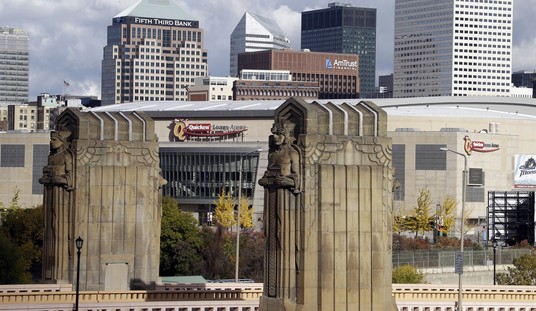As rumblings of possible illegal immigration reform continue to make noise on Capitol Hill, it's important to keep in mind the southern border with Mexico is anything but secure. On Sunday, a mob of illegal aliens attempting to enter the United States attacked Border Patrol agents with rocks, water bottles and other items. More from San Diego 7:
According to CBP, a Border Patrol agent ordered the Mexican nationals to stop, but they continued walking into the U.S.
Officials said the agent fired a PepperBall Launcher, but it did not deter the crowd.
“They had their phones out so this group was out to spark an incident. That's what they wanted to do, “ Border Patrol Union representative Gabriel Pacheco said.
Had cooler heads not prevailed it could have ended much worse, he said.
Even with reinforcements, agents were outnumbered, dodging threats, rocks and bottles.
More agents responded as the crowd became “unruly,” even hitting one agent in the head with a full water bottle, officials said.
Recently, Border Patrol agents rejected a proposal from the Police Executive Research Forum suggesting lethal force not be used against illegal aliens throwing rocks.
"Border Patrol agents work in a unique law enforcement environment and encounter threats that are not often seen by police and sheriff’s departments. One of these threats is the use of rocks by smugglers and illegal aliens to harass, distract, and assault Border Patrol agents. Rocks are prevalent throughout the southwest border, weapons that are close at hand, and are of sufficient size to cause extensive injuries to agents including death. The recent recommendations made by the Police Executive Research Forum (PERF) to limit the use of deadly force against rock throwers and vehicular assaults, are shortsighted and come from an urban policing mentality. Police officers often operate from patrol cars and have the luxury of multiple back-up units in close proximity should that need arise. They are able to contain and control a location thus making the arrest of any suspect easier. Border Patrol agents are not trained this way and do not have these same tactical opportunities," a press release from the National Border Patrol Council states. "Border Patrol agents are often on foot and outnumbered when encountering illegal aliens and smugglers, and are trained to close the distance with suspects in order to quickly control and arrest them. This often puts agents in a situation where they are assaulted by rocks. Additional agents may be miles away and less-than-lethal weapons unavailable. An assault that may commence quickly leaves agents at a tactical disadvantage and with little recourse other than to use their firearm to defend themselves."
Recommended
As talks of amnesty have become more prevalent, we've seen border crossings double, making the work of Border Patrol Agents more difficult.
"We've seen the number of illegal aliens double, maybe even triple since amnesty talk started happening," an agent told Townhall, who asked to remain unnamed due to fears of retaliation within Customs and Border Protection [CBP], something he said is common. "A lot of these people, although not the majority, are criminals or aggravated felons. This is a direct danger to our communities."
Earlier this week, an illegal alien was sentenced to 40 years in prison for the brutal murder of Border Patrol Agent Robert Rosas, who was ambushed by a group of Mexican men along the border fence while trying to steal his night vision goggles. They murdered him and then stole his equipment. Rosas is survived by his wife and two children.
A Mexican teenager convicted in the execution-style murder of a U.S. Border Patrol agent in July was sentenced to 40 years in prison Thursday after an emotional hearing in a courtroom packed with family members and dozens of Border Patrol agents.
The defendant, Christian Daniel Castro-Alvarez, 17, appeared to hold back tears as prosecutors recounted the grisly details of how Castro-Alvarez and two other assailants ambushed Agent Robert W. Rosas Jr., 30, on a remote border trail east of San Diego.
Castro-Alvarez, who was 16 at the time, was spared a life sentence in part because he turned himself in and accepted responsibility for the crime, pleading guilty in November, according to federal prosecutors who recommended the 40-year term.
The shooting prompted a wide-ranging search and border crackdown that is continuing. The whereabouts of Castro-Alvarez’s companions, men in their mid- to late 20s, are unknown. The FBI, the lead agency on the case, would not comment on the status of the investigation.
Castro-Alvarez and the two men, after crossing the border on the night of July 23, held up Rosas and took night vision goggles and other items from his vehicle. When Rosas, a father of two, tried to take the gun from Castro-Alvarez, a struggle ensued.
Rosas was shot multiple times in the head.
This post has been updated.
























Join the conversation as a VIP Member